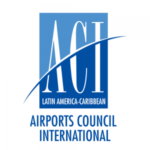 Montreal, 3 de junio de 2018 – El Consejo Internacional de Aeropuertos (ACI World) ha advertido hoy que cualquier intento desproporcionado de regular o inhibir la inversión privada adecuada en los aeropuertos podría obstaculizar gravemente la respuesta de la industria de la aviación a la creciente demanda de capacidad adicional de servicios aéreos.
Montreal, 3 de junio de 2018 – El Consejo Internacional de Aeropuertos (ACI World) ha advertido hoy que cualquier intento desproporcionado de regular o inhibir la inversión privada adecuada en los aeropuertos podría obstaculizar gravemente la respuesta de la industria de la aviación a la creciente demanda de capacidad adicional de servicios aéreos.
Con la previsión de que el número mundial de pasajeros se duplicará para 2030, las partes interesadas de la industria de la aviación están de acuerdo en que la inversión en infraestructura aeroportuaria es fundamental para la economía mundial y la conectividad mundial, especialmente para alcanzar los Objetivos de Desarrollo Sostenible (SDG).
ACI tiene una posición neutral en cuanto a la propiedad de los aeropuertos. La inversión privada ha sido una opción exitosa para los aeropuertos de Australia, México, Brasil, Japón, India y muchos países europeos y, en los últimos cinco años, ACI estima que los aeropuertos con participación del sector privado invirtieron un 14% más en proyectos de capital en comparación con sus contrapartes públicas y un 12% más que el promedio mundial.
De hecho, aunque los aeropuertos con participación del sector privado sólo representan, según las estimaciones, el 14% de los aeropuertos de todo el mundo, estos aeropuertos gestionan más del 40% del tráfico mundial


